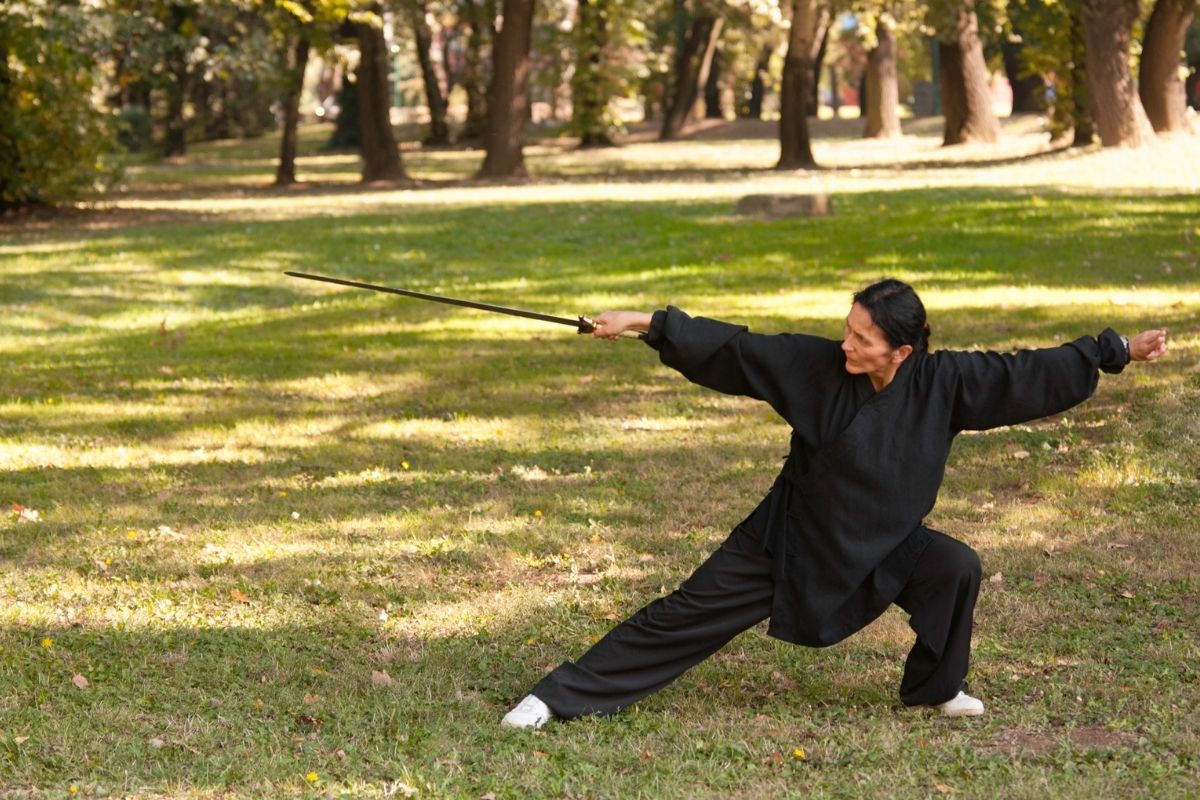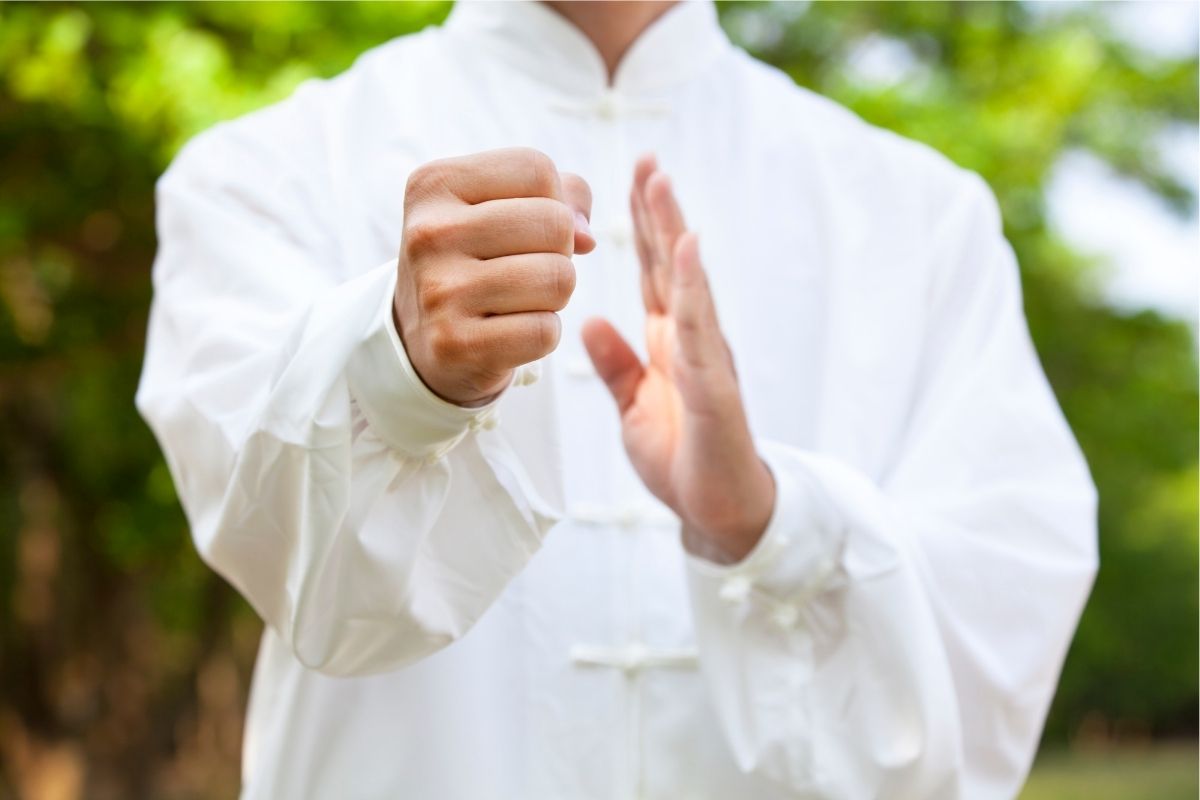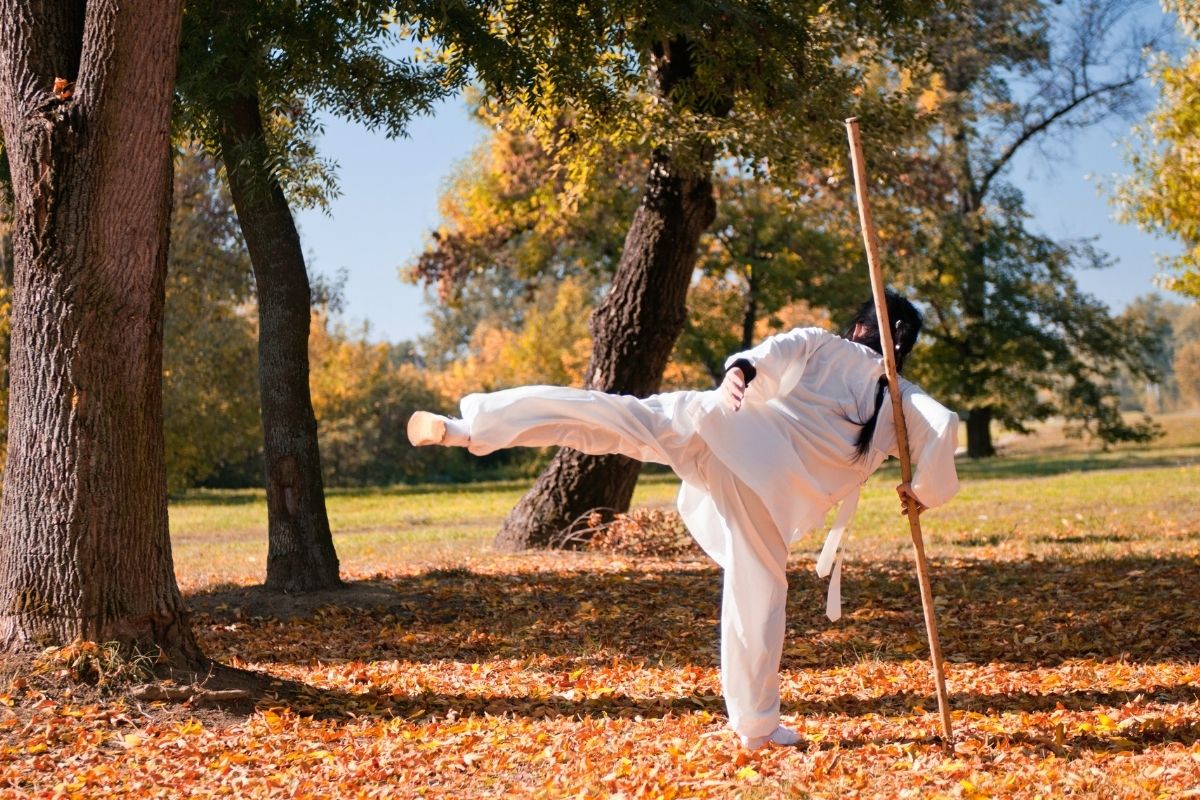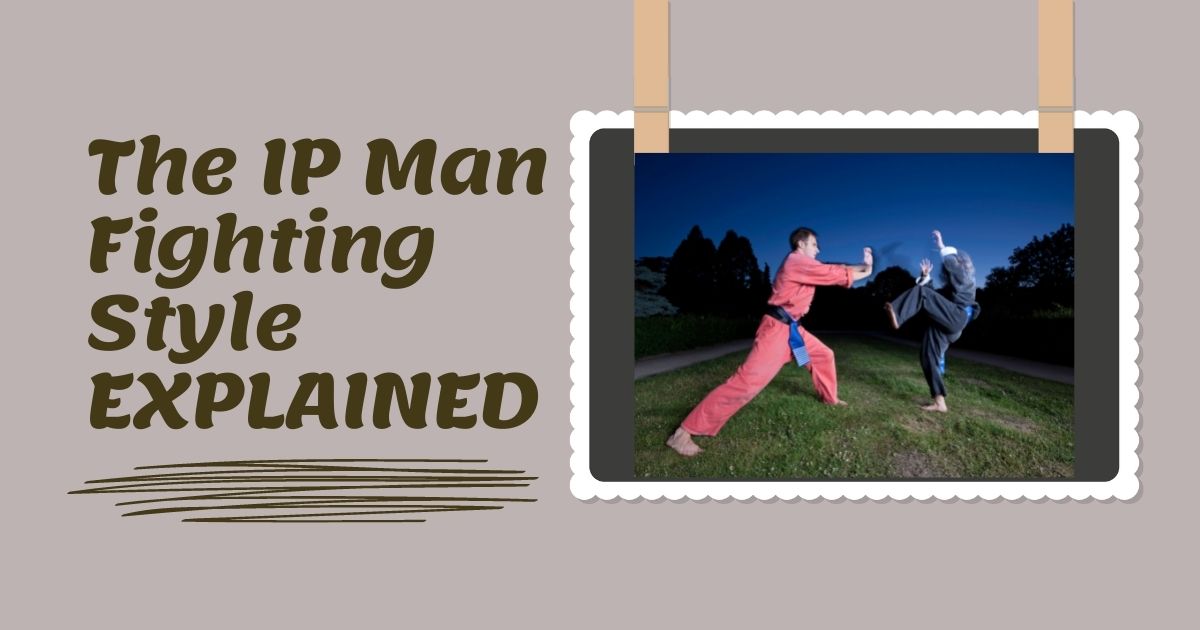The Ip Man Wing Chun Fighting Style
The Ip man fighting style, Wing Chun, is a kung fu form that focuses on close-quarter combat, fast blows, and tight defense to defeat opponents. With rapid footwork, simultaneous defense and offensive, and diverting the opponent’s energy to your favor, this traditional Chinese martial art destabilizes opponents.
Although Wing Chun is a sophisticated kung fu style that takes years to master, beginners can quickly begin learning it by grasping its principles, philosophies, and fundamental skills.

Who Was Ip Man?
The real Ip Man, born in 1893, was a grandmaster of Wing Chun kung fu that emphasizes reflexive movements. Ip began learning Wing Chun when he was nine years old while living in China. Distinguished Wing Chun experts Leung Bik and Chan Wah-shun were among his teachers.
Ip Man was already skilled enough to teach kung fu to others in his early twenties, but he didn’t have his school. Ip chose to work as a police officer instead.
IP Man and Bruce Lee
He later relocated to Hong Kong, where he took on several students and taught them the methods of Wing Chun. Many of the people Ip Man trained were young males involved in gang violence on Hong Kong’s streets. Wing Chun, Ip thought, would put them on the right track and enhance their lives.
Bruce Lee, then a teenager, was one of these kids. Lee, who began practicing kung fu at the age of 13, improved his talents even more after meeting Ip, his kung fu master, in the late 1950s, and by the time he left Hong Kong, he had the skills he needed to open his kung fu school.
People recognize IP man for helping to popularize Wing Chun, which they are teaching worldwide, but that is not the limit of his influence. There’s also the impact he had on Bruce Lee and, by extension, everyone who studied under him.
Lee mastered the “art of detachment” and a profound and fundamental grasp of kung fu while training with Ip Man. Lee taught philosophical ideas about how a person should empty their mind and be “formless” like water, which he derived from IP man’s lessons.
Ip Man’s Wife
Except that she was a relative of Qing Dynasty official Zhang Yinhuan (1837–1900), prominent in the Hundred Days’ Reform movement in 1898. She was born to educated parents in Foshan, and people don’t know much about Cheung’s birth and childhood life.
She married Ip man in Foshan in 1916, and the couple had four children: Yip Chun and Yip Ching, and Yip Nga-sum and Yip Nga-wun. Yip Chun, her son, claims that she and Yip had never fought. Cheung was a traditional Chinese woman, solemn, supportive, and patient with her husband.
Cheung, her husband Ip, and their oldest daughter Nga-sum left Foshan for Hong Kong in 1950 after the communist victory in the civil war. After arriving in Hong Kong through Macau, Cheung and her son returned to Foshan to get their identity cards. In 1951, however, the border between China and Hong Kong was closed, and Cheung could not be with her husband.
She could not travel to Hong Kong and died of cancer in Foshan in 1960, while her children were eventually reunited with their father in Hong Kong in the 1960s. Her daughters would eventually marry, one to an Ng-surnamed husband and the other to an Ng-surnamed spouse, but with a different pronunciation.
Ip Man’s Son
On July 10, 1924, Ip Hok-Chun was born in Foshan, Guangdong, to a police officer and martial artist Ip Man and his wife, Cheung Wing-sing.
Ip’s father fled to Hong Kong in 1949, after the Communists formed the People’s Republic of China on the Chinese mainland, and Ip, aged 24, stayed in Foshan to finish his university studies. Ip and his younger brother, Ip Ching, were compelled to leave Foshan in 1962 owing to the Cultural Revolution and relocate to Hong Kong to join their father.
How did Ip Man Die?
Ip died of laryngeal cancer on December 2, 1972, at his unit at 149 Tung Choi Street in Hong Kong, only seven months before Bruce Lee, his most renowned student, died. They laid him to rest in Hong Kong’s Wo Hop Shek.
The global practice of Wing Chun is Ip’s legacy. Ip’s prominent students are Chu Shong Tin, Wong Shun-Leung, Bruce Lee, Moy Yat, Ho Kam Ming, Victor Kan, his nephew Lo Man-Kam, and William Cheung. In addition, Ip penned a book about Wing Chun.
The Ip Man Museum on the grounds of the Foshan Ancestral Temple houses several artifacts from his life. There are many films based on Ip Man’s life.

The Development of the Ip Man Fighting Style
Ip Man was born in Foshan in 1893 and grew up in a wealthy family as the son of a local merchant. He began his Wing Chun training when he was 12 years old and taught it informally to a few acquaintances until World War II, when he enlisted in the military. During the Japanese conquest of China, Ip suffered immensely, finally losing their wealth, home, and business.
Ip, his wife, and their children continued to live in poverty after WWII, as civil war erupted and ripped China apart. He was a police captain before departing to Foshan for Hong Kong in 1949 when the Communists took power.
He landed in Hong Kong at 51, penniless and estranged from his family. Then, in 1952, a martial artist named Leung Cheung, who had no idea who Ip Man was, happened upon him roaming around Macao and took pity on him.
He took him in, and he remembered when this fragile and homeless old guy began criticizing Cheung’s technique during a martial arts session he was conducting. Cheung issued a challenge and was soundly defeated in minutes, handing both his class and himself to Ip Man.
As Ip’s fame as a martial artist grew, this newly founded Wing Chun school did. It wasn’t a popular technique, but it was all over by the time Bruce Lee, who learned it from Ip Man, popularized it in the 1960s.
While Ip Man battled with money and ill health (including opium addiction) in his later years, he lived to be 79, and his legacy lives on through his writings on Wing Chun and his son Ip Chun, who inherited the technique.
In reaction to his students’ experiences on the streets, Ip Man was willing to adapt the art’s teaching methods and even forms, according to testimonies from the 1950s and 1960s. He also transformed the way people talked about art.
He replaced ancient sayings and the complex philosophy of the Five Elements and Eight Directions with an accessible discourse that would appeal to current western-educated high school and college students. Below are some forms:
Biu Gee
Biu Gee also called “Darting or Thrusting Fingers,” is a martial art that emphasizes utilizing power over short distances. Students also learn emergency procedures, such as reclaiming the centerline after falling or becoming stranded.
To recover from a disadvantaged position in each of the three portions of Biu Gee, you will combine hand and foot motions from the first two forms. This will place you in an attacking posture, allowing you to disable your opponent with short-range power.
Muk Yan Chong
Muk Yan Chong is easy to understand. Muk Yan Chong, also called “Wooden Dummy,” is a more advanced version in which you train against a stationary opponent (the wooden dummy). This allows you to recognize and understand how your hand and foot movements interact with your opponent.
Because the dummy does not move, there are changes to the shape that fits the training equipment. Some of the uses of dummy tactics are self-evident. Keep in mind that some are approximations (adaptations), and others have multiple application options represented by a single movement in a set.
Luk Dim Boon
Luk Dim Boon Kwun is easy to understand. This form, also called the 6.5 Point Pole Form,” features the use of a pole as a weapon when attacking an opponent. Fighting with a pole can help you improve your balancing and defense skills.
Baat Jaam Dao
Be aware of Baat Jaam Dao. The most sophisticated form, Baat Jaam Dao, or “Eight Cutting Swords” or “Butterfly Knives,” employs short swords as weapons. Not everyone who aspires to this level learns Baat Jaam Dao; they only select a few to learn it.
Precision, technique, and position are the primary emphases of the form. Because of the knives, the foot and hand movements differ slightly from other formats.
Siu Nim Tao
Many Wing Chun movements are based on Siu Nim (or Lim) Tao, or “Little Idea.” Siu Nim Tao is Wing Chun’s first form, in which you will learn good stance, body holding, relaxation, and basic hand motions. Before moving on to the next portion of Siu Nim Tao and learning other techniques, you should master each section.
Every primary (first) form movement has significance. Tempo, tension and relaxation, angles, and distances are all factors to consider. They do not include techniques in the form.
Chum Kiu
Chum Kiu, or “bridge seeking,” introduces whole-body movement to augment what one learns in Siu Nim Tau’s basic form. Chum Kiu focuses on how to turn your body correctly and efficiently, with weight distribution and balance in mind. Turning and kicking are two examples of foot actions that are covered here.
Before moving on to the next section of Chum Kiu and learning other skills, one should master each section. For example, before mastering the secondary form, master well stance turning (changing the horse shape from side to side) in contrast to the main structure, where one fixes the posture.

Key Takeaways
So, who was Bruce Lee’s master? You know the answer to this question and that Wing Chun is a kung fu form that focuses on close-quarter combat, fast blows, and tight defense to defeat opponents. With rapid footwork, simultaneous defense and offensive, and diverting the opponent’s energy to your favor, this traditional Chinese martial art destabilizes opponents.
Although Wing Chun is a sophisticated kung fu style that takes years to master, beginners can quickly begin learning it by grasping its principles, philosophies, and fundamental skills.

